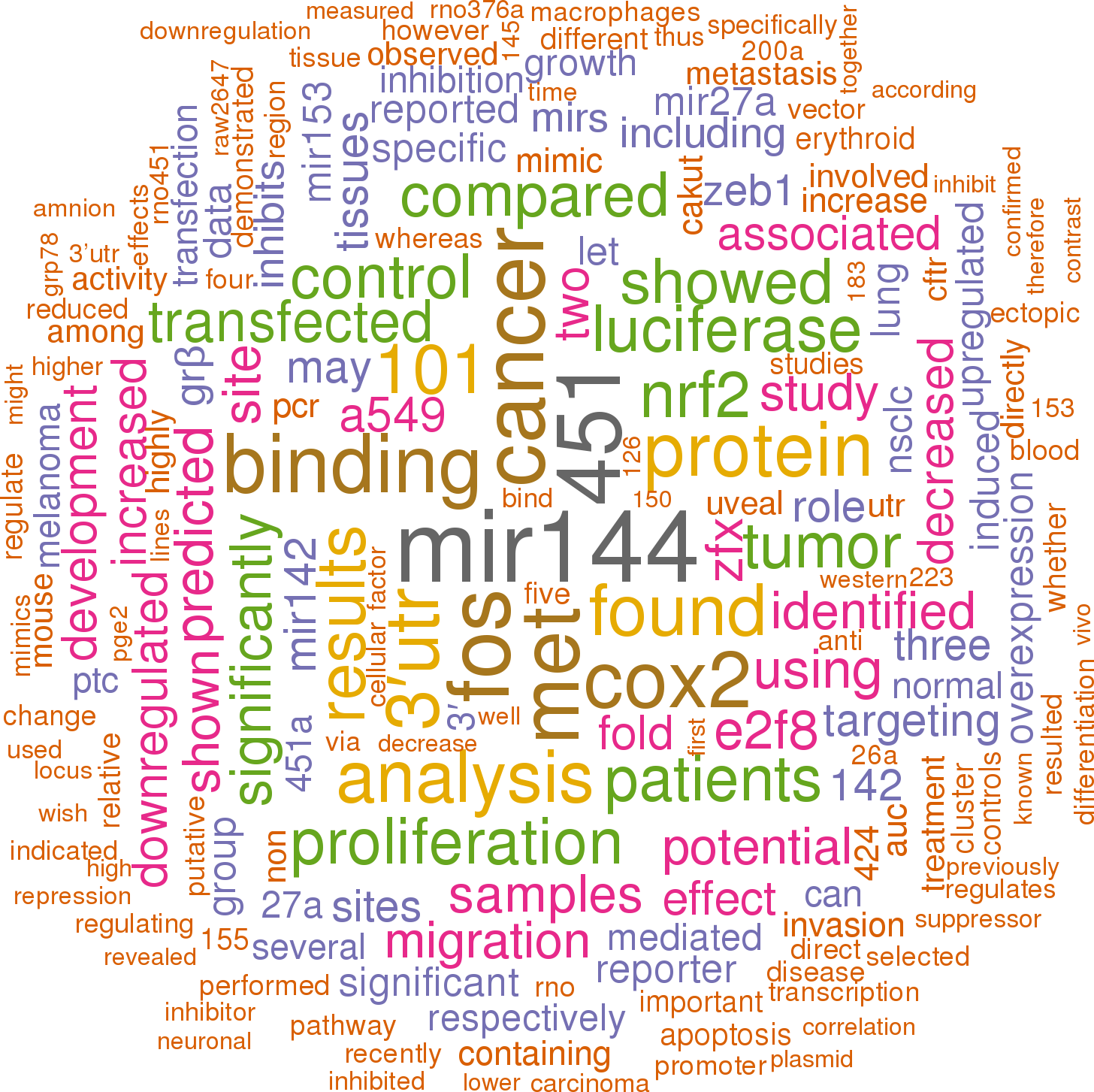Accession
MI0000460
Symbol
HGNC:
MIR144
Description
Homo sapiens
hsa-mir-144 precursor miRNA
Gene family
MIPF0000093;
mir-144
Summary
Caution, this is an AI generated summary based on literature. This may have errors. ?
MIR144 is a microRNA that has been found to downregulate the activity of the MAP3K8/ERK1/2/PPARγ axes, leading to the induction of brown/beige-like characteristics in differentiated adipocytes [PMC9779381]. Overexpression of MIR144 has been shown to significantly increase the expression of human GRβ, while not affecting GRα [PMC5053652]. MIR144, along with miR153, miR27a, and miR142-5p, has been found to inhibit the interaction and binding of these microRNAs with the 3' UTR of human Nrf2, indicating Nrf2 as a direct regulatory target [PMC3517581]. Additionally, MIR144 has been shown to decrease both c-Met and ADAM10 mRNA levels [PMC7352235]. It is worth noting that components of the AP1 complex have been found to regulate the expression of various microRNAs including MIR144 [PMC7123062]. However, other studies have reported an increase in MIR144 levels in colorectal cancer [PMC4599290]. MIR144 is a microRNA that plays a role in regulating various cellular processes. It downregulates MAP3K8/ERK1/2/PPARγ axes activity and induces brown/beige-like characteristics in adipocytes. It also affects GRβ expression and inhibits interaction with Nrf2. Additionally, it reduces c-Met and ADAM10 mRNA levels. However, its role in colorectal cancer is still not fully understood.
Literature search

164 open access papers mention hsa-mir-144
(963 sentences)
(963 sentences)
Sequence
120704
reads,
1971
reads per million, 101 experiments
uggggcccuggcugGGAUAUCAUCAUAUACUGUAAGuuugcgaugagacacUACAGUAUAGAUGAUGUACUaguccgggcaccccc
.(((((((.((((((.((((((((.(((((((((.((((......))))..))))))))))))))))).)))))).)))).)))..
.(((((((.((((((.((((((((.(((((((((.((((......))))..))))))))))))))))).)))))).)))).)))..
Structure
-u - u G A -A gc ggg gccc ggcugG AUAUCAUC UAUACUGUA Guuu g ||| |||| |||||| |||||||| ||||||||| |||| ccc cggg cugaUC UGUAGUAG AUAUGACAU caga a cc a c A - ca gu
Annotation confidence
High
Do you think this miRNA is real?
Comments
This miRNA sequence is predicted based on homology to a verified miRNA from mouse [1]. The expression of this miRNA has not been verified in human. The mature sequence shown here represents the most commonly cloned form from large-scale cloning studies [2].
Genome context
chr17: 28861533-28861618 [-]
Clustered miRNAs
3 other miRNAs are < 10 kb from hsa-mir-144
| Name | Accession | Chromosome | Start | End | Strand | Confidence |
|---|
Disease association
hsa-mir-144 is associated with one or more human diseases in the Human microRNA Disease Database
| Disease | Description | Category | PubMed ID |
|---|
Biological pathways
hsa-mir-144 is involved in one or more biological pathways:
(Source: Reactome)
(Source: Reactome)
Biological reactions
hsa-mir-144 is involved in one or more regulation/signalling events:
(Source: Reactome)
(Source: Reactome)
Mature hsa-miR-144-5p
| Accession | MIMAT0004600 |
| Description | Homo sapiens hsa-miR-144-5p mature miRNA |
| Sequence | 15 - GGAUAUCAUCAUAUACUGUAAG - 36 |
| Evidence |
experimental
cloned [2] |
| Database links |



|
| Predicted targets |



|
Mature hsa-miR-144-3p
| Accession | MIMAT0000436 |
| Description | Homo sapiens hsa-miR-144-3p mature miRNA |
| Sequence | 52 - UACAGUAUAGAUGAUGUACU - 71 |
| Evidence |
experimental
cloned [2] |
| Database links |



|
| Predicted targets |



|
References
|




